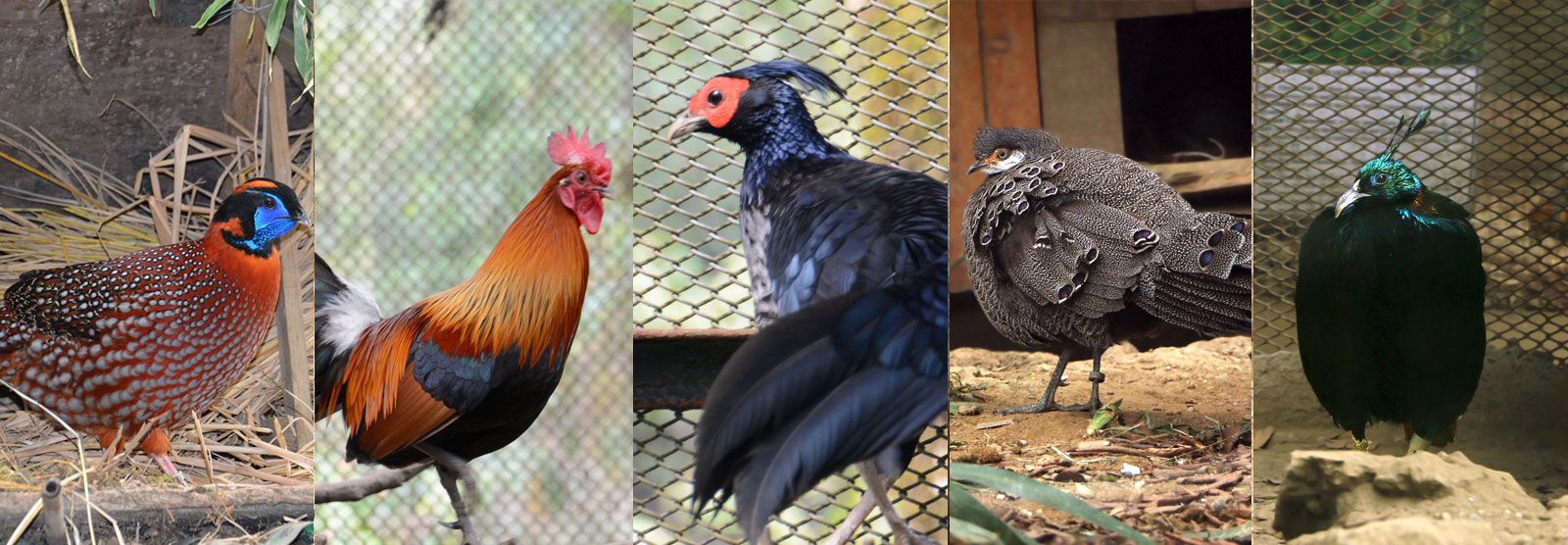

Pheasant populations in most of their range have long been undergoing heavy depletion due to excessive hunting and poaching for their bright plumage and meat. A large tract of their habitat has been encroached on by humans. PNHZ Park has been involved in the conservation breeding of several pheasants including both indigenous and exotic pheasants.
The Central Zoo Authority has designated the Park as the coordinating zoo for the conservation breeding of Satyr Tragopan, and the participating zoo for the conservation breeding of Grey Peacock pheasant, Himalayan Monal, and Blood pheasant. The other Himalayan species in the Park are Red Jungle fowl, Kalij pheasant, Cheer pheasant, and Temminck’s Tragopan.
ENCLOSURES AND ENRICHMENT
The pheasantry at the zoo was reconstructed in the year 2000-01. The Park has 11 enclosures for pheasants including exotic and indigenous. Chick-rearing houses are behind the enclosures. The front has been provided with non-breakable transparent fiberglass to give a clear view to the visitors. This also acts as a windbreaker and serves as protection from visitors and noise pollution. The floor of the enclosures is concrete for protection from rats and other predators.
All enclosures are provided with perches, wooden nesting boxes, feeders, small trees, and shrubs. The enclosures are enriched with dry leaves and soil.
OFF-DISPLAY CONSERVATION BREEDING CENTRE FOR HERBIVORES AND PHEASANTS AT DOWHILL, KURESONG
An area of 4.65 hectares and 1.28 hectares of forest land under Kurseong Forest Division was handed over to Padmaja Naidu Himalayan Zoological Park for the construction of Satellite Zoo and staff quarters respectively.
The breeding center was inaugurated on 07.12.2011 by Shri Hiten Barman, Minister-in-Charge/ Forests, Govt of west Bengal along with Shri Rohit Sharma, MLA, Kurseong. The satellite zoo was developed for the purpose of pheasantry as well as the conservation breeding of herbivores and pheasants.
The breeding centre has a 2-unit pheasantry, 7-unit pheasantry and an aviary with 4 enclosures. Another 2 unit pheasantry is being constructed at present. The pheasantry is complete with chick rearing houses and artificial incubation rooms. The breeding centre also has a veterinary hospital, keeper’s quarters, record keeping room, and the Deputy Directors bungalow. The centre is also equipped with automatic artificial incubators.
